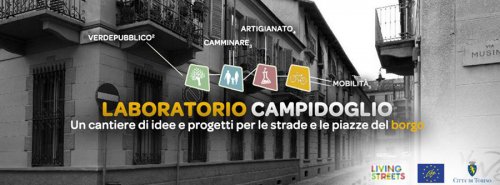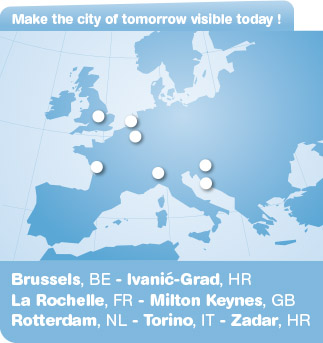Turin, Italy
In Turin (985,000 inhabitants), thanks to a living lab
gathering associations citizens and municipal departments, Living
Streets have provided the opportunity to rethink the use of public space
towards pedestrianisation in the residential district of Campidoglio.
A living lab in the Campidoglio district
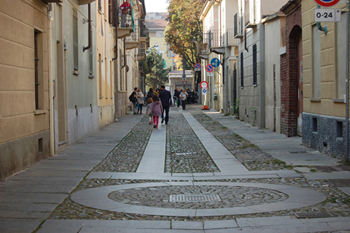 Campidoglio (5,000 inhabitants) is mainly a residential district and it
is also home to many local artists and craftsmen, but is not a
touristic neighbourhood. Campidoglio is characterised by narrow streets,
full of cars. Currently there is only one pedestrian street, but this
is not really respected as people still continue to park and drive
there. In this district residents are willing to take back the streets
and organise something else in the public space. The municipality
supported this process by proposing Laboratorio Campidoglio to
facilitate meetings with the citizens, allowing contact among
themselves, but letting them be the main contributors to the Living
Streets activities.
Campidoglio (5,000 inhabitants) is mainly a residential district and it
is also home to many local artists and craftsmen, but is not a
touristic neighbourhood. Campidoglio is characterised by narrow streets,
full of cars. Currently there is only one pedestrian street, but this
is not really respected as people still continue to park and drive
there. In this district residents are willing to take back the streets
and organise something else in the public space. The municipality
supported this process by proposing Laboratorio Campidoglio to
facilitate meetings with the citizens, allowing contact among
themselves, but letting them be the main contributors to the Living
Streets activities.
To prepare the events, the municipality contacted all associations in
the neighbourhood as well as the craftsmen. In June 2017 a world café
workshop was organised involving about 30 participants to develop ideas
for activities: What can we organise to make the area more liveable? All
the ideas were discussed in terms of their feasibility and based on
this a follow-up workshop was organised in July to define the agenda of
the Living Streets event. Participants highlighted the need to make the
borough more visible to its inhabitants but also from the outside so
that is becomes more inclusive.
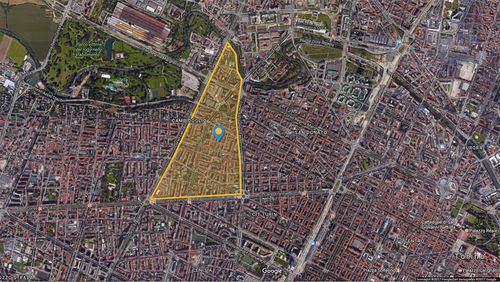
"Citizens showed great interest and participation in the life of the
borough: they are more aware of the nature and future of the area, which
is not merely the pedestrianization, but also taking back the public
spaces and making the neighbourhood more valued and lively. With the
Living Streets, the citizens have realized the potential of the district
where they live!
We need to encourage people to go to this borough. But how? For
instance, by opening shops on the street that arouse the curiosity of
visitors." (Carlo Zanella, craftsman)
In September and October 2017, two two-day Living Street events were
co-organised with the active participation of the citizens, shops,
schools and other associations within the neighbourhood. These events
attracted numerous people outside of the area who came there for the
first time.
A wide range of activities took place:
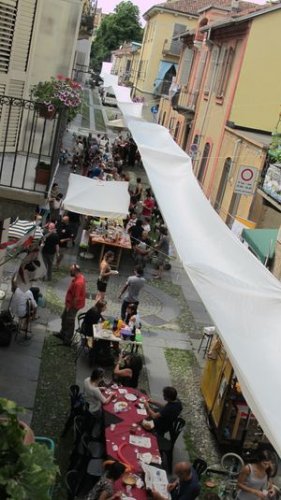
- Painting workshop: One of the local artists in the
neighbourhood proposed a painting workshop with children on the topic
“what neighbourhood would you like in the future?”.
-
Consultation of citizens who were asked to imagine the neighbourhood
with different modes of mobility, what kind of possibilities they see to
change this area into a pedestrian zone and also what street furniture
they would need to make this area more comfortable. Citizens suggested
to have benches, plants, public furniture. Urban furniture was installed
with the help of a group of citizens already involved in urban
agriculture.
- Role play with the primary school: Role play
involves imitating the character and behaviour of someone who is
different from yourself. Children were playing roles such as a disabled
person, a mum with a pushchair and little children, so that they could
see with the eyes of the role they were playing which were the problems
of the area. After the tour of the neighbourhood they could come back
with difficulties they faced and they were aware of, allowing them to
reimagine the Campidoglio district without all these issues. Some
children were playing the policemen, putting papers with messages on
cars that were not appropriately parked. These were not real fines, so
were positively perceived. The message was simply saying: “And me, where
can I go?”.
- Art exhibition: Local artists from the
neighbourhood organised an art exhibition, including paintings with
sights from the Campidoglio district. This allowed some artists to be
promoted and be more well-known while making people discover specific
spots in the neighbourhood illustrated in the paintings.
- Debate
on future activities: A debate was organised to think about what should
be done after the Living Streets event. Citizens appreciated that
Living Streets made connections between them and now they are growing as
a group and want to be more autonomous. This ensures that at the end of
the project citizens still want to act and continue this process.
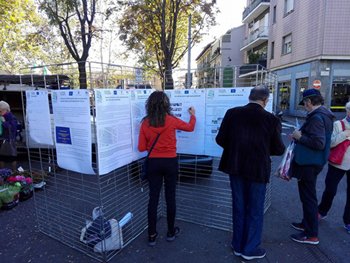
The impact: a collaborative project that brings more social interaction to the district
The Living Streets events confirm that the citizens wish to
revitalise the public area in Campidoglio. Traffic and parking were the
most debated themes during this experiment.
Thereafter it was officially decided that by the end of 2018, part of
the Campidoglio area will be pedestrianised and this is causing a big
turmoil in the district. The majority of the inhabitants are satisfied
with it, but some are worried about the toll parking or the distance of
the car parks from their home. Residents will need time to integrate the
transformation in their daily lives, but the first impression is that
there is a general acceptance of this decision.
"An important part of Campidoglio will be pedestrianised: this result
certainly represents a positive outcome because it closes a long path
of confrontation and positional conflict and inaugurates a phase of
concrete definition of solutions for the future of the district.
Now a stable group of citizens is acting as intermediary with the
District and meets regularly in order to discuss the improvement of the
area.
Without a doubt, this happens thanks to the "constructive" climate created by Living Streets." (Claudio Cerrato, President of the District, City of Torino)
The social cohesion in the neighbourhood has considerably increased
and a discreet number of citizens now meet regularly to discuss issues
regarding the daily life of the borough. Schools, commercial activities
and citizens are aware of the importance to exchange ideas and listen to
each other in order to make proposals and implement them together.
New activities have been created following the Living Streets events:
the creation of a monthly street market of arts and crafts made in
Campidoglio, as well as urban gardening activities with citizens and
schools.
Further information
http://torinolivinglab.it/laboratorio-campidoglio/
Contact
Michele Fatibene, Policy Officer - Responsible for Innovation, City of Turin
Rossana Guglielmetti, European Policies manager, City of Turin
